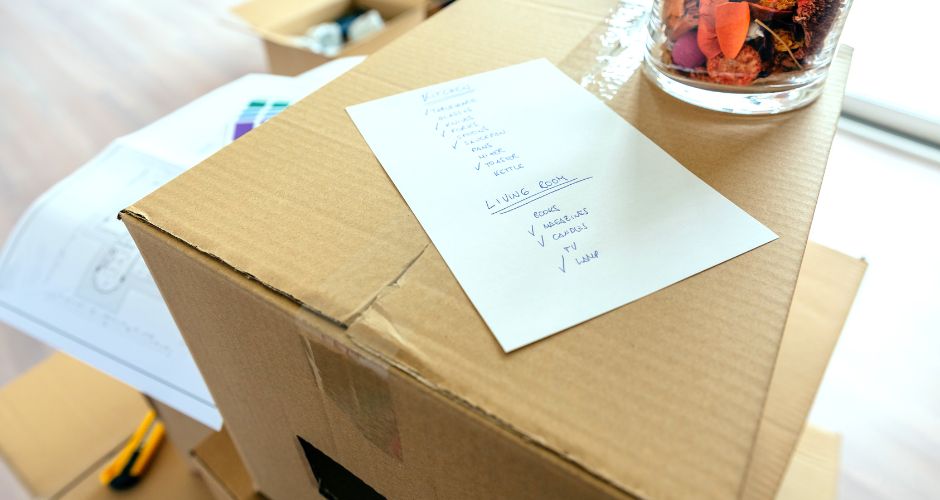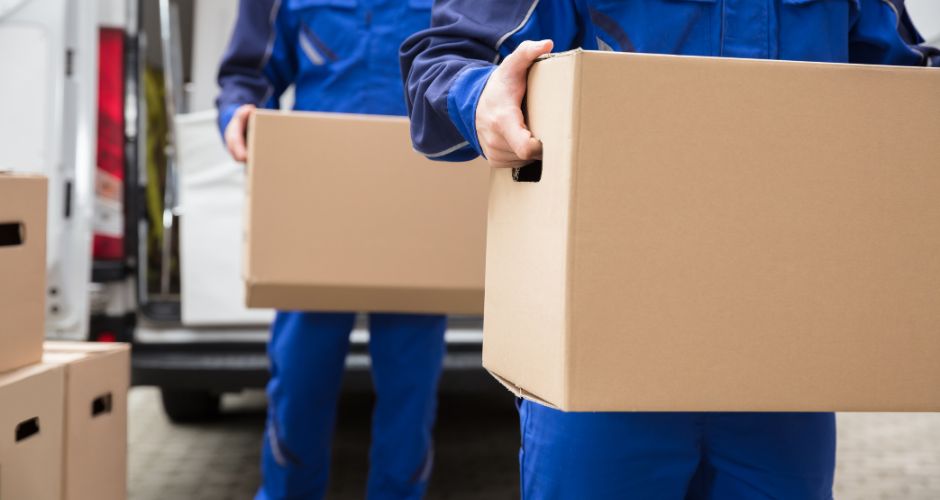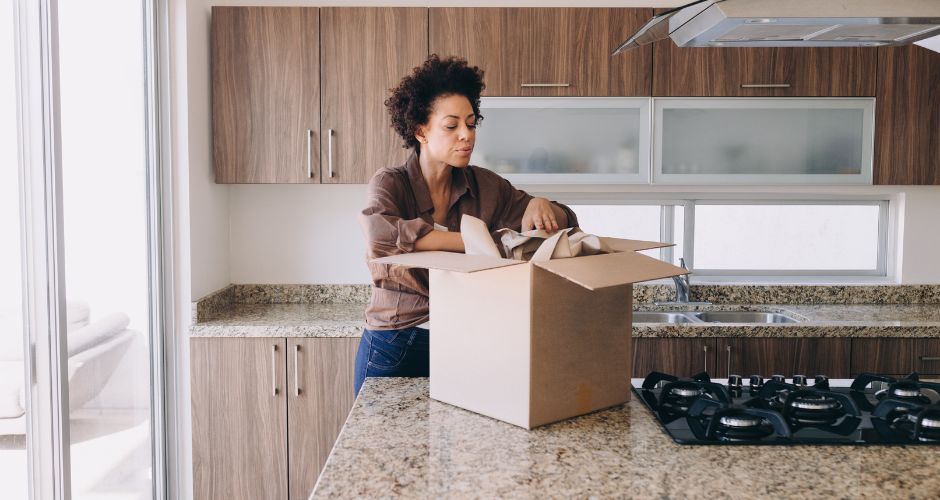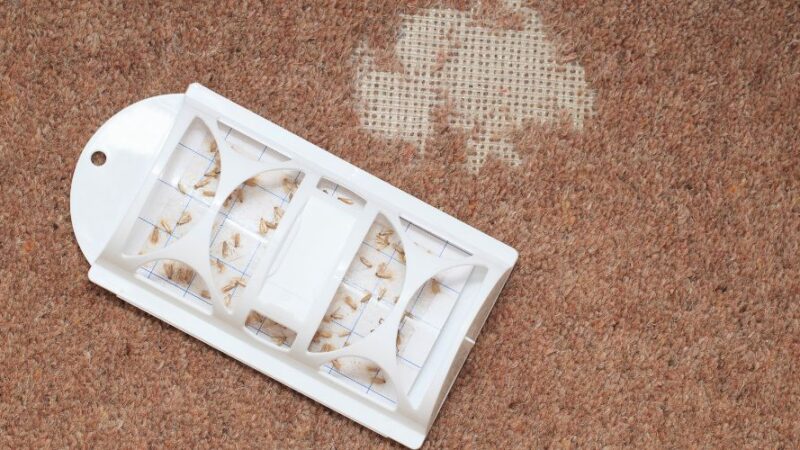Moving Checklist for a Smooth Move🚚📦📋

Moving to a new home is an exciting chapter in life, but it can also be one of the most stressful experiences we encounter. The key to a smooth and stress-free move is organization, and that’s where our ultimate organized moving checklist comes in.
Moving can be an exciting but often overwhelming experience, whether you’re searching for moving out for the first time checklist, moving to a new state checklist, moving out cleaning checklist, office moving checklist, checklist for moving elderly parents.
With this comprehensive guide, you can ensure that every detail is noticed during your moving process. From two months before the move to settling into your new space, we’ve got you covered. Let’s dive into how to organize a move checklist for a hassle-free relocation.
✔️Two Months Before the Move: Get Organized
Create a Moving Binder
Start by creating a dedicated moving binder or a digital folder. This is where you’ll keep all your moving-related documents, such as estimates, contracts, and checklists. Having everything in one place will save you from hunting down crucial papers later.
Sort and Declutter
Begin going through your belongings room by room. This is your chance to decide what to keep, what to sell, donate, or toss. By decluttering now, you’ll save time and effort when packing and unpacking later.

Research Moving Companies
If you plan to hire professional movers, now is the time to start researching and obtaining estimates from different companies. Look for references and reviews to ensure you choose a reliable and reputable moving company.
✔️Six Weeks Before the Move: Plan the Logistics
Choose Your Moving Date
Coordinate the moving date with your old and new residences. Make sure that both locations will be available on the chosen day to avoid last-minute complications.
Start Packing
Begin packing items you use sparingly, such as off-season clothes and infrequently used kitchen items. Remember to label your boxes clearly. Knowing the contents of each box and the room it belongs to will make unpacking much more efficient.
Notify Important Parties
Let your current and future utilities, post office and other relevant parties know about your move. This will ensure a smooth transition in terms of essential services.
✔️Four Weeks Before the Move: Pack Strategically
Continued Packing
Keep packing items from each room systematically. Remember to label your boxes with their contents and the room they belong in. An organized labelling system is a game-changer during the moving process.
Inventory List
Create an inventory list of your belongings and precious items. This list will help you keep track of your possessions and will be helpful when settling into your new home.

Medical Records
Request copies of your family’s medical records from your current healthcare providers. It’s essential to have these records accessible when you move to a new location.
✔️Two Weeks Before the Move: Finalize Details
Hire Professional Services
If you need professional services like cleaning, disassembly/reassembly of furniture, or speciality moving for delicate items, now is the time to arrange for them.
Check here Ultimate Guide to Deep Cleaning Your Home!
Notify Important Parties
Notify crucial entities of your address update, encompassing financial institutions, credit card providers, and subscription services. This step guarantees the uninterrupted receipt of essential mail and notifications.
Pack an Essentials Box
Prepare an essentials box with items you’ll need immediately at your new home, such as toiletries, a change of clothes, important documents, and basic kitchen supplies. This box should be easily accessible when you arrive at your new residence.

✔️One Week Before the Move: Confirm and Prepare
Confirm Details
Double-check all the moving company details, the moving day timeline, and any necessary travel arrangements. Make sure everything is in order for a smooth moving day.
Moving Day Survival Kit
Prepare a moving day survival kit with snacks, water, phone chargers, and any other items you’ll need for the day. Moving can be exhausting, and having these essentials readily available will make the process more comfortable.
Set Up for Unpacking
At your new home, designate areas for boxes and furniture, making sure that each item is placed in the appropriate room. This will help you to unpack more efficiently and settle into your new space quickly.
✔️Moving Day: Stay Organized
Final Walkthrough
Before departing from your previous dwelling, perform a last inspection to verify you have noticed all items and that all utilities have been switched off. This precautionary step will assist you in sidestepping any unexpected issues.
Check the Moving Truck
Inspect the moving truck for any damage and confirm that it’s the correct one if you’ve hired professional movers. It’s crucial to ensure that everything is in order before you hit the road.

Supervise Loading
While your belongings are being loaded onto the truck, it’s essential to oversee the process. Make sure items are adequately secured to prevent damage during transit.
✔️Arriving at Your New Home: Unpacking and Getting Comfortable
Unpacking Plan
Have a plan for unloading the truck at your new home. Designate areas for boxes and furniture to make unpacking more efficient. Knowing where each item should go will save you time and effort in the long run.
Furniture Reassembly
If any furniture items were disassembled for the move, ensure that they are correctly reassembled in your new home. Having a plan for reassembly will make your new space feel more like home.
Enjoy Your New Home
Finally, take a moment to enjoy your new space. Begin settling in, making it your own, and embracing this.
Transform Your New Home with Style with these Tips for Choosing the Ideal Exterior Paint Color!
Additional Tips for a Smooth Move

In addition to the organized moving checklist, here are some extra tips to ensure a successful and stress-free move:
- Label Everything: Clearly label your boxes, not just with their contents but also with the room they belong to. This will simplify the process of unpacking and ensure that items end up in the right place.
- Keep Essentials Handy: Your essentials box is your lifeline on moving day and the first days in your new home. Keep it within easy reach so you have quick access to the necessities.
- Stay Hydrated and Take Breaks: Moving is hard work, and it’s essential to take regular breaks and stay hydrated. Dehydration and exhaustion can make an already challenging day feel even more stressful.
- Ask for Help: If possible, enlist the help of friends or family members. Moving is a team effort, and having extra hands can make the process faster and more manageable.
- Plan for Your Pets: Moving can be stressful for pets. Ensure they are comfortable and secure during the move, and gradually introduce them to your new home to help them adjust.
- Consider Professional Movers: While moving on your own can save money, professional movers can make the process much smoother and less stressful. They have the experience and equipment to handle the logistics efficiently.
- Stay Positive: A positive mindset can make a big difference. Embrace the change and focus on the exciting opportunities that lie ahead in your new home.
Moving may always come with some degree of stress, but with careful planning and an organized moving checklist, you can significantly reduce that stress and ensure a seamless transition to your new home. Remember, each step you take to prepare in advance will make the moving process more manageable and less overwhelming. Happy moving!
FAQ’s
Q.1 What is a moving checklist, and why is it important?
A moving checklist is a detailed list of tasks and steps to follow when planning and executing a move. It is crucial for staying organized and ensuring a smooth transition to your new home. The moving checklist helps you prioritize tasks, reduce stress, and minimize the chances of forgetting essential items or steps during your move.
Q.2 Is there a specific checklist for moving to a new house?
Yes, there are specific checklists tailored for moving to a new house. These moving checklists include notifying utility providers, packing room by room, hiring movers (if needed), and conducting a final walkthrough of your old home. A checklist designed for moving to a new house ensures you cover all the necessary details for a successful move.
Q.3 What should be on a moving business checklist?
A moving business checklist is essential for professional moving companies. It includes tasks related to logistics, such as obtaining permits, scheduling moving crews, ensuring the safety of items during transport, and following specific regulations and guidelines applicable to the moving industry.
Q.4 What items should be on a moving checklist for packing?
A packing checklist should cover packing supplies (boxes, tape, bubble wrap, packing paper), labeling materials, a room-by-room packing plan, instructions for handling fragile items, an essentials box for immediate needs, and a system for tracking your packed items.
Q.5 Are there specific checklists for moving to another state or overseas?
Yes, moving to another state or overseas requires additional planning. Specific tasks for these moves may include:
-Researching the new location.
-Understanding international shipping regulations.
-Obtaining necessary visas and permits.
-Making arrangements for shipping vehicles or pets.
Therefore, moving specialized checklists is beneficial for these types of moves.
Q.6 How can I calculate my moving costs using a checklist?
To calculate your moving costs, you can use a moving costs checklist that includes estimated expenses for hiring movers, packing supplies, travel, and other potential expenses. By detailing these costs on your checklist and summarizing them, you can create a budget for your move.
Q.7. What should I include in a moving day checklist?
A moving day checklist should consist of tasks like conducting a final walkthrough of your old home, supervising the loading process, keeping essential documents and valuables with you, arriving at your new home early, directing movers during unloading, and ensuring all inventory items arrive safely.
Q.8. Are there specific checklists for moving an office or an apartment?
Yes, moving an office or an apartment involves unique considerations. An office detailed moving checklist might include tasks like notifying clients and updating business information, while an apartment checklist might include deep cleaning and returning keys to the landlord. Specialized moving checklists help address these specific requirements.
Q.9 What are some essentials on a moving supplies checklist?
A moving supplies checklist should include essential items such as various-sized boxes, packing tape, bubble wrap, packing paper, markers for labeling, furniture blankets, and specialty packing materials for fragile or valuable items.
Q.10 Is there a moving checklist for those moving locally within the same city or town?
Yes, a moving checklist for a local move includes many of the same tasks as a long-distance move, but it may not involve extensive travel planning. It emphasizes packing, notifying local utility providers, and ensuring a smooth transition to your new local address.
Q.11 How can I prepare for an international move using a moving overseas checklist?
An international or moving overseas checklist should cover tasks such as obtaining necessary visas and permits, researching the new country’s customs regulations, packing items in compliance with international shipping rules, and ensuring the proper documentation of valuable belongings for customs purposes.
Q.12 How do I make a moving checklist?
To create a moving checklist, begin by organizing your tasks into categories like Packing, Utilities, Transportation, Paperwork, Home Preparation, and Finances. Under each category, list specific tasks and assign dates and deadlines. Use symbols or icons to indicate task priorities, and include important contact information for your moving company and utility providers. Add checkboxes to track completed tasks, and maintain a section for miscellaneous or unexpected items. Regularly review and update your checklist as you progress with your move.
What is the best way to organize a move?
Organizing a move effectively involves thorough planning. Start by creating a detailed moving checklist, and prioritize tasks based on their importance and deadlines. Declutter your belongings by donating, selling, or discarding items you no longer need. Begin packing early, starting with non-essential items and moving towards daily essentials closer to your moving date. Ensure you label boxes with their contents and intended rooms.
Notify utility companies of your move, and book professional movers in advance if necessary. Keep important documents, medications, and valuables with you during the move, and inform friends, family, and institutions of your change of address. Finally, conduct a final walkthrough to ensure you’ve addressed all essential tasks before leaving.
What to do 20 days before moving?
About 20 days prior to your move, several crucial tasks should be on your checklist. First, confirm the moving details with your chosen moving company or truck rental provider to ensure all logistics are in place. Start the packing process by focusing on non-essential items, like out-of-season clothes, books, or decorative items. Utilize quality packing materials and remember to clearly label boxes with their contents and the rooms they’re destined for.
It’s also time to notify your current utility providers about your upcoming move and schedule the disconnection of services for the day after you move out. Simultaneously, set up new services at your future address. Don’t forget to address your change of address with the post office, and notify banks, insurance providers, and any subscription services of your impending relocation.
If you have school-age children, contact their schools to organize the transfer of records. Ensure that your healthcare providers are aware of your move and consider obtaining copies of your medical records for your new healthcare providers.
What to pack first when moving checklist?
Start by packing items you rarely use, such as seasonal clothing, decor, and items from storage spaces. This includes items in the attic, basement, or garage.






2 thoughts on “Moving Checklist for a Smooth Move🚚📦📋”